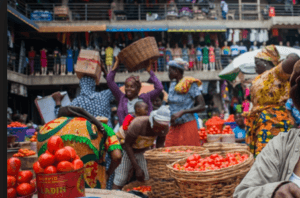Ghana inflation rate drops to 16.7% in July
 The Inflation rate for July 2016, fell to 16. 7 per cent in July from the 18.4 per cent in June, on the stability of the cedi and fall in food prices.
The Inflation rate for July 2016, fell to 16. 7 per cent in July from the 18.4 per cent in June, on the stability of the cedi and fall in food prices.
“The reason for the drop in July inflation is as a result of base drift and seasonality effects as well as the stability of the cedi and the seasonality of food pricing,” Government Statistician, Dr Philomena Nyarko, has said.
The monthly change rate was 0.9 per cent in July 2016 compared to 1.3 per cent recorded in June this year.
Food inflation was 8.6 per cent in July same as what was recorded in June, Dr Nyarko said.
However, the year on year non-food inflation rate dropped to 21. 2 per cent from 24.1 per cent in the year.
The main price drivers for the non-food inflation rate were education, 35.4 per cent, recreation and culture, 28.3 per cent, transport, 25.4 per cent , housing, water, electricity, gas and other fuels, 25.4 per cent clothing and foot wear, 24.3 per cent and furnishing households equipment and routine maintenance, 23.0 per cent.
Similarly, the inflation rate for imported items fell to 15.2 per cent in July from the 17.3 per cent recorded in June, showing that inflation for locally produced items was 2.1 per cent higher than the imported ones.
On the regional level two regions Greater Accra and Ashanti recorded inflation rates higher than the national average of 16.7 per cent.
Greater Accra recorded the highest inflation of 21.3 per cent followed by Ashanti region with 18.0 per cent while the Upper East region recorded the lowest inflation rate of 10.0 per cent.
Source: GNA
